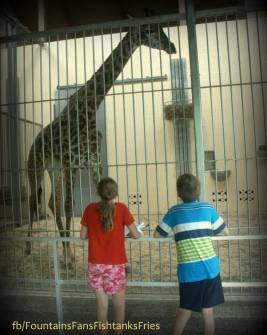I’m not sure who first coined the term “unschool” but I certainly appreciate it. This term, and philosophy, is often used now to describe homeschooling and some educational approaches. Just the term, unschool, is my daily touchstone which reminds me we do not have to fit into a mold to be able to learn. In fact, most of us learn best in creative, interactive ways. If you are trying to teach a special learner you definitely know there is NO ONE WAY that will guarantee learning success – there is no formula, no mold.
Unschooling is simply breaking away from the traditional school model of classrooms and assignments and creating active, interactive, hands-on ways to learn. And yet, you may still use traditional methods when they are appropriate for the child and subject matter. The key is flexibility! School can be anywhere and everywhere. Unschooling can take place everyday, not just Monday through Friday. It may be as simple as taking traditional materials such as workbooks, outside and sitting under the tree in the fresh air rather than sitting indoors. Or it may be using a trip to the grocery store as the math lesson for today.
My child hates to write. Just the physical task of forming words on paper seems arduous. However, writing words on a Magna Doodle or on the drive way using chalk, suddenly becomes more rewarding. My son struggles with reading and spelling. He can learn phonics but has trouble transferring that knowledge into reading skills. So instead of just writing words over and over, or reading flashcards until they are memorized, let’s bring in more sensory input to the learning process (aka Kinsethetic learning). Spell out a word with your finger, gently on sandpaper. Make a bunch of PlayDoh “snakes” and then bend them into the shapes of letters to spell words. Toss a ball back and forth as you take turns spelling out the letters of a word; rhythm creates sensory input. With any unschool approach just as in typical settings, repetition is still helpful in learning to read and spell. However an active learning approach is often easier to repeat because it is more fun for the child. HINT: If you homeschool in a state that requires a portfolio of your child’s work, and you are writing on a tablet or the sidewalk, or spelling word with PlayDoh – just take photos! Keep a photo album of your “unschool” work a record of their curriculum.
Unschooling comes in very handy with math regardless of which curriculum you use to teach actual computation (we use the Touch Math system for my visual learner, I also recommend Math U See). However, transferring math skills to real life is the tricky part. Most of us grew up doing story problems (aka word problems). Story problems are not all bad, however, if you are an abstract learner or a visual learner, it can be difficult to transfer all that wordy information into an equation. If you are a very logical learner and don’t see the point, it is difficult to find the motivation to try. So, get out of the “classroom”, away from the workbooks and find math or subject matter out in the world. Here are a few ideas for unschooled math (while incorporating other subjects if desired) :
- Plant a small garden or just a few plants in pots inside near a window. Many opportunities here for reading instructions, doing research on the internet or at the library on how to plant and grow. I prefer vegetables because the product creates even MORE learning opportunities about harvesting, nutrition, recipes and cooking. Your child can help plant seeds, counting the seeds out or dividing them into equal numbers; make a chart of the items planted; record data; chart when you water the plants; measure their growth; color code your information; make a poster about your garden data and present it to Grandma! So many opportunities to turn one project into numerous math ideas, and also include social studies, creative writing, science, whatever you need! Here are some great ideas and printables for using a garden as part of your curriculum: Garden Curriculum,K-8.
- A trip to the zoo, local nature preserve, or farm can serve as a great way to learn
 about animals but also math! Collect data on each animals average weight, or potential height. How many pounds of food does each animal consume per day? What is the average lifespan of each animal? Any data can become subject matter for math skills learning at home. You are creating the topic and the numbers rather than using random digits printed in a workbook. Again, create a chart of data; find the difference between the weights of the largest and smallest animal. Estimate and then calculate how much food the goat would eat in one year, or over his lifetime if he lived to the estimated lifespan. Equations, data and charts, oh my!
about animals but also math! Collect data on each animals average weight, or potential height. How many pounds of food does each animal consume per day? What is the average lifespan of each animal? Any data can become subject matter for math skills learning at home. You are creating the topic and the numbers rather than using random digits printed in a workbook. Again, create a chart of data; find the difference between the weights of the largest and smallest animal. Estimate and then calculate how much food the goat would eat in one year, or over his lifetime if he lived to the estimated lifespan. Equations, data and charts, oh my!
Even if you are teaching a very special learner, like I am, and you believe they may never do real-world math on their own, you are still giving exposure to the information – which I believe is a MUST in any teaching situation.
Getting away from traditional curriculum can empower you as a teacher/parent, by allowing you to flex your style to the needs of the child. It may help keep them engaged and more interested in learning. It can make the impossible start to seem possible. So, if you are having trouble with any aspect of the learning process, try unschooling your school a bit, and see what may grow!
Resources for you:
Math U See, visual and tactile learning
Hands On Learning Activities for Young Children
Info on kinsethetic learning, great for an active child
Thanks for stopping by !!

